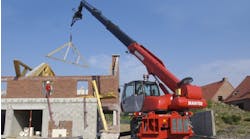Nonresidential Construction Rises in April Nonresidential building grew 7 percent to $150.5 billion during April after decreased activity during the previous two months, according to McGraw-Hill Construction Dodge, a division of the McGraw-Hill Companies. Overall construction starts were essentially unchanged from March, with housing and public works posting moderate declines.
At a seasonably adjusted annual rate of $477 billion, April’s data kept the Dodge Index at 144, unchanged from the revised reading in March. The Dodge Index began the year at 151, but slipped back to 144 in February, and held at this reduced level over the next two months. For 2002 as a whole, the index averaged 151.
“April’s stability is a good sign that the slowdown will continue to be mild. Public works is experiencing some dampening from tighter fiscal conditions, but commercial building is now showing more of an up-and-down pattern, following its extended decline of the prior two years.
Although store construction dropped 2 percent in April, warehouse construction leaped 26 percent, while office construction increased 22 percent, helped by the start of a $141 million federal office building in San Francisco and a $110 million office building in Chicago.
Residential building declined 3 percent in April to $243.1. Single-family housing dropped 2 percent in dollar volume, while multifamily housing went down 9 percent.
Nonbuilding construction dropped 3 percent in April. Bridge construction was up 26 percent, while other public sectors declined.
During the first four months of 2003, total construction on an unadjusted basis was down 5 percent year over year, with residential building up 5 percent, nonresidential building down 11 percent and nonbuilding construction down 21 percent. Regionally, the west was up 9 percent, South Central up 2 percent, South Atlantic down 5 percent, Midwest down 11 percent and the Northeast down 28 percent.





